30/10/07
Eye-Fi World First Wireless SD Memory Card
Online Photos Destinations support Eye-Fi
27/10/07
Carla Accardi, Galerie Greta Meert, Brussels
Galerie Greta Meert, Brussels
October 26 - November 24, 2007
13 rue du Canal, 1000 Brussels
galeriegetameert.com
Updated 30.06.2019
26/10/07
Phase One Microsoft Strategic Alliance
24/10/07
Christian Hoischen, Renwick Gallery, NYC - Jagdszenen aus Niederbayern
22/10/07
FIAC 2007: Acquisitions de l’Etat
Le ministère de la Culture et de la Communication a procédé pour la troisième année consécutive à une série d’acquisitions d’œuvres exposées à la 34ème édition de la Foire internationale d’art contemporain (18-22 octobre 2007). Ces œuvres viendront enrichir la collection du Fonds national d’art contemporain.
La commission nationale consultative en charge des acquisitions Arts plastiques a proposé l’acquisition des oeuvres dont la liste se trouve dans la suite de ce message.
Ces acquisitions représentent un budget de 400.000 euros.
Les œuvres acquises par le Centre national des arts plastiques viendront enrichir les collections publiques et seront inscrites sur les inventaires de la collection du Fonds national d’art contemporain.
Le Fonds national d’art contemporain est la plus grande collection internationale d'art vivant rassemblée en France. Constituée par les achats et commandes effectués auprès des artistes en activité et des galeries, la collection s’est enrichie, depuis 1981, de plus de 20.000 oeuvres relevant aussi bien des arts plastiques et de la photographie, que des arts décoratifs et du design.
Le Centre national des arts plastiques en assure la gestion pour le compte de l’Etat, ainsi que sa conservation. Il s’occupe également de la diffusion de la collection par une politique active de dépôts, dans les musées, les administrations et lieux publics, mais, également de prêts lors d'expositions temporaires en France et à l'étranger. Par ailleurs le Centre national des arts plastiques organise chaque année des expositions en région constituées uniquement d’oeuvres de la collection.
Ainsi, du 22 octobre 2007 au 16 décembre 2007, est organisée l’exposition « Début de Siècle, un choix dans la collection du Fonds national d’art contemporain », en partenariat avec le musée départemental d’art contemporain de Rochechouart.
Membres de la commission :
La commission nationale consultative en charge des acquisitions se compose de 9 personnalités qualifiées pour les arts plastiques et de 5 responsables, dans le même domaine, du ministère de la Culture et de la Communication.
Artistes : Daniel FIRMAN, Bernard PIFFARETTI
Collectionneurs : Bruno CARON, Michel POITEVIN
Critiques d’art : Henri-François DEBAILLEUX, Philippe PIGUET
Deux directeurs de lieux de diffusion en région: Le directeur général du musée d’art moderne de Saint-Étienne : Lorand HEGYI, Le directeur du FRAC Champagne-Ardenne François QUINTIN
Une conseillère pour les arts plastiques DRAC Ile de France : Isabelle MANCI
Ministère de la Culture et de la Communication : Olivier KAEPPELIN, délégué aux arts plastiques
Chantal CUSIN-BERCHE, directrice du CNAP
Bernard BLISTENE, inspecteur général de la création artistique, Délégation aux arts plastiques
Christian BRIEND, conservateur à la DMF Camille MORINEAU, conservateur au MNAM-CC
OEUVRES D’ART ACQUISES PAR L’ETAT :
Dennis ADAMS, Make down Vanity, 2006. Vidéo couleur avec son, 26 mn, 2/5. Galerie Gabrielle Maubrie, Paris
Eleanor ANTIN - 2 oeuvres :
The King, 1972. Vidéo d’après film original, 52mn, Galerie Erna Hecey, Bruxelles
Portrait of the King, 1972. Photographie noir et blanc, 58 x 47 cm, 1/1, Galerie Erna Hecey, Bruxelles
Kader ATTIA, Skyline, 2007. Réfrigérateurs, peinture noire et tesselles de miroirs, 1/3. Galerie Anne de Villepoix, Paris
Robert BARTA, Rosso Corsa, 2007. Glissière de sécurité laquée, 80 x 450 x 50 cm. Galerie Frank Elbaz, Paris
Vincent BEAURIN, Coco, 2007. Polystyrène et sable, 167 x 89 x 40 cm. Galerie Frédéric Giroux, Paris
Inaki BONILLAS, Una Tarjeta para J. R. Plaza, 2007. Impression digitale pigmentée sur papier coton, Galerie Projecte SD, Barcelone
Tony BROWN, Pinocchio, Truth, Lies, 2007. Photographie Cprint sur aluminium, 110 x 70 cm, 1/ 5, Galerie Collet Park, Paris
Isabelle CORNARO, Savana (12 paysages différents), 2007. Impression numérique sur papier, série de 12 photographies. 35 x 50 cm chaque, Galerie De Multiples, Paris
Tony CRAGG, Sans Titre, 2000. Aquarelle sur papier, 75,5 x 56 cm, Galerie Karsten Greve, Paris
Matali CRASSET, Nature à habiter : chaise longue, 2007. Bouleau, vernis et peinture laquée, 283 x 122 x 83 cm, Galerie Thaddaeus Ropac, Paris
Wim DELVOYE, Action Doll, 2007. Poupée et 4 tee-shirts, 37 x 17 x 40 cm, Galerie Emmanuel Perrotin, Paris
Véronique ELLENA, Le Pas des ondes, 2006. Photographie couleur, 31 x 39,5 cm, 1/10, Galerie Alain Gutharc, Paris
Mounir FATMI, Connection, 2004-2007. Photographie couleur, 100 x 75 cm, édition à 5 exemplaires, Galerie LA BANK, Paris
Ceal FLOYER, Monochrome Till Receipt (White), 2006. Encre sur papier, 28 x 8 cm, Galerie Esther Schipper, Berlin
Joanne GREENBAUM, Ice Sculpture, 2004. Huile sur toile, 127 x 178 cm, Galerie Nicolas Krupp, Bâle
Camille HENROT, King Kong Addition, 2006. 5 exemplaires + 5 photographies couleur sans titre, 20,8 x 26,3 cm chaque, édition de 3, Galerie Kamel Mennour, Paris
Changha HWANG, Eyetime, 2007. Acrylique sur toile, 213 x 213 cm, Galerie Baronian Francey, Bruxelles
Armand JALUT - 2 oeuvres :
Doigt crumble, 2007. Huile sur toile, 100 x 81 cm, galerie Michel Rein, Paris
La Limace, 2007. Huile sur toile, polyptyque, 61 x 50 cm, 61 x 54 cm, 65 x 50 cm, 65 x 50 cm, Galerie Michel Rein, Paris
Véronique JOUMARD, Travelling II (Hiroshima), 2004. Photographie couleur contrecollée sur aluminium, 180 x 180 cm, édition de 3, Galerie Serge le Borgne, Paris
Julius KOLLER - 2 oeuvres :
Yo yo, 1982. Photographie couleur, Galerie gb agency, Paris.
Anti-Performance, 1980. Photographie couleur, Galerie gb agency, Paris.
Frédéric LECOMTE, Sac de nœuds, 1995-2007. Verre sablé et moteur, 100 x 150 cm, Galerie Claudine Papillon, Paris
Tobias LEHNER, Sans titre, 2007. Acrylique sur toile, 230 x 400 cm, Galerie Suzanne Tarasieve, Paris
Frédérique LUCIEN, Dessin, 2007. Pastel gras et calque additionné, 138 x 110 cm, Galerie Jean Fournier, Paris
Arnaud MAGUET, Fender, Vox et Marshall de la série « Le Caractère fétiche de la musique ». Toile d’amplificateur sur châssis. 3 x (70 x 55 cm), Galerie La Blanchisserie, Paris
Christian MARCLAY, Stereo (série Imaginary Records), 1987. 2 pochettes de disque recollées, 30 x 40 cm, Galerie Paula Cooper, New York
Philippe MILLION, Buffet Combeau. Bois, contreplaqué, medium et peinture, 140 x 110 x 40 cm, 2/7, Galerie Alain Gutharc, Paris
Ivan NAVARRO, The Edge, 2007. Porte en aluminium, miroir et ampoules, 218 x 91,5 x 24 cm, 1/3 + 1EP + 1EA, Galerie Daniel Templon, Paris
Joao ONOFRE, Untitled Version (I see a Darkness), 2007. Vidéo couleur avec son, 4m’18, 1/6, Galerie Cristina Guerra Contemporary Art, Lisbonne
Alexandre PERIGOT, Funky pipe. Aluminium, inox et moteur, 210 x 70 x 70 cm. Galerie Grégoire Maisonneuve, Paris
Guillaume PINARD, Sans Titre, 2007. Crayon sur papier, 250 x 150 cm, Galerie Anne Barrault, Paris
Philippe STARCK – 2 œuvres :
Miss Wirt, 1982. Métal peint, assise et dossier en tissu et cuir, Galerie Peyroulet, Paris
Miss Beason, 1983. Métal peint, cordon et canevas synthétique, Galerie Peyroulet, Paris
Stéphane THIDET, Refuge, 2007. Photographie couleur, 90 x 120 cm, 1/5, Galerie Aline Vidal, Paris
Cécilia TRIPP, Boogie Man, 2007. Film 16 mm, 1’50, 1/3 + 2 AP, Galerie Grégoire Maisonneuve, Paris
Catherine VAN EETVELDE, Glu, 2007. Film d’animation, 3m’, 3/12, Galerie Anne Barrault, Paris
Danh VO, Sans Titre, 2007. Installation composée de 4 sculptures en bois dans 4 caisses en bois. Isabella Bortolozzi, Berlin
Pavel WOLBERG, Sans Titre, 2005. Photographie couleur, Cprint, 1/3, 100 x 150 cm, Dvir Gallery, Tel Aviv
Virginie YASSEF, Astéroïde rampant, prévision pour un astéroïde-étoile, 2007. Roche magnétique et billes de fer, système électrique. 40 x 40 x 4,5 cm, Galerie Georges-Philippe et Nathalie Vallois, Paris
Giacometti, Oeuvre gravé, BnF Richelieu, Paris
18/10/07
Hasselblad H3DII-39 DSLR
H3DII-39MS users will gain the full benefits of all the key features of the new H3DII DSLR system, providing outstanding pixel resolution, better colors, and improved detail rendering. Such features include a new RAW converter; Ultra-Focus™, which compensates for minute changes in the plane of focus resulting from changes in aperture; and DAC-Digital Auto Correction™, which offers digital APO correction, digital distortion correction, and now anti-vignetting to deliver for the first time full digital lens correction, when used with Hasselblad HC and HCD lenses.
The H3DII-39MS will not be film compatible, but, as with the H3D and H3DII product families, will offer photographers the ability to use the digital magazine, which contains the sensor unit and related technology, on a view camera via an adapter.
Christian Poulsen, CEO of Hasselblad, comments: “For more than fifty years, it has been Hasselblad’s mission to enable photographers to create the finest images possible, and it is clear that today the best way to accomplish this is with an integrated DSLR. An integrated system produces the highest image quality, due to the fact it enables the integration of all key components, including the lenses, within the camera system, and in the H3DII also enables features such as Ultra-Focus and DACDigital Auto Correction, allowing Hasselblad to offer customers full digital lens correction for the first time ever. With the H3DII-39MS, in addition to single-shot technology, we’ve included our multi-shot technology to offer professional photographers of still life and architecture a camera system that gives them image quality equal or in many cases superior to anything they’ve experienced before, as well as the functionality, flexibility and ease of use of a digital system.”
Further acknowledging the specific demands of film photographers, Hasselblad is also announcing the H2F, a simplified, film-only version of the H2 camera, which it is replacing. By removing the highend digital imaging technology found in the H2, which is unnecessary for shooting with the film-only H2F, and therefore simplifying the manufacturing process, Hasselblad is able to offer the H2F at a substantially lower price than the H2. The H2F offers full compatibility with H System HV viewfinders, film magazines, and HC lenses.
It is Hasselblad’s strategy to excel in the high-end segment of the photographic market and offer camera systems that deliver the best image quality and the most flexibility. While the company offers the premier DSLR solution with the H3DII product line and will support the legacy of film photography with the H2F camera, market demand does not justify the cost of maintaining the additional manufacturing line for the dual-platform H2. In keeping with its customer-centric modus operandi, Hasselblad will, however, continue to offer service and support for H1 and H2 owners for a minimum of 7 years from date of purchase. Meanwhile, the H3DII, H3DII-39MS and the H2F are being assembled in Copenhagen, Denmark and Gothenburg, Sweden, on new production lines engineered specifically for their unique designs and assembly requirements.
The H3DII-39MS will be available from January 2008 and the H2F from November 2007 worldwide through Hasselblad’s national subsidiaries and channel partners with a retail price of €33,500 for the H3DII-39MS, and €2,100 for the H2F camera body and €6,460 for the H2F camera kit, excluding tax. An attractive trade-in program has been announced that enables current Hasselblad users, as well as users of third party digital backs, to upgrade to the H3DII system, including the H3DII-39MS.
www.hasselblad.com
16/10/07
Julien Berthoud, Expo Photo Paris
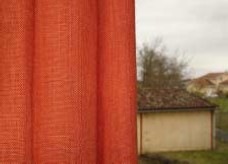
JULIEN BERTHOUD, Photographies
Images de l’intranquillité
Expo Photo des Rencontres Photograhiques du 10e
Photo © Julien Berthoud
« Le réel ne m’intéresse pas comme quelque chose dont je voudrais rendre compte, mais plutôt comme un réservoir de couleurs, de lignes, de formes et de symboles que je combine pour essayer de créer des tensions et des sensations. La série " images de l’intranquillité " est née du désir de créer des images formellement épurées et minimalistes qui à la fois reposent l’oeil et interrogent le ressenti. Dans un dénuement autant apaisant qu’inquiétant, ces photos essaient de dire le doute, l’équilibre, la fragilité » - Julien Berthoud
Anji - Expo Photo Paris
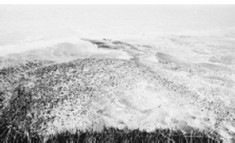
ANJI, Photographies
Extase - To Phil Glass
Expo Photo des Rencontres Photograhiques du 10e
Photo © Anji
« Avec ces vues cavalières d’un même lieu à la géomorphologie variable, ma volonté est de composer en images une musique à structure répétitive, de créer un temps hypnotique où le regard est immergé dans un temps qui enveloppe, s’enroule, tournoie, s’amplifie, se perd et se retrouve » – Anji
Expo Photo Collective, Paris, Mairie 10e
Cette exposition collective de photographies à la Mairie du 10e arrondissement de Paris est l'un des rendez-vous de la seconde édition des Rencontres Photographiques du 10e qui a lieu du 16 octobre au 30 novembre 2007. Ce sont 20 photographes qui ont été sélectionnés sur dossier. Sont réunis des photos de professionnels et d’amateurs dont un bon nombre a déjà participé à la première édition de ces rencontres photographiques. Les commissaires de cette exposition sont Arno Gisinger et Etienne Hatt.
Voici la liste, par ordre alphabétique, des photographes participant à cette exposition. Pour chacun d'eux, un message donne des informations sur le travail qu'ils présentent et/ou sur les photographes eux-mêmes.
Eric Boumier
Marie Bourdeau
Hsin Yin Chang
Francis Cochard
Jean-Michel Delage
Clémence Dubois
Christian Grau
Anthony Jahn
Jean-Bastien Lagrange
Marti Mueller
Cécilia Garroni Parisi
Ian Patrick
Michel Rolin
Marion Roux
Régis Sénèque
Christophe Siebert
Baptiste de Ville d’Avray
Florence Wetzel
Mairie du 10e - Hall de la Mairie
72, rue du Faubourg Saint-Martin
75010 Paris
M° Château d’Eau / Strasbourg Saint-Denis
Lundi de 8h30 à 17h
Mardi de 8h30 à 19h
Mercredi de 8h30 à 18h
Jeudi de 8h30 à 19h30
Vendredi de 8h30 à 19h
Samedi de 9h à 12h30
du 16 octobre au 30 novembre 2007
Site internet : http://rencontresphoto10.free.fr
15/10/07
Kentmere Photographic Acquired by Harman
Following the buy-out, Harman is keen to stress that the Kentmere brand will remain relatively unchanged. It will continue to offer the same resin coated and fibre based monochrome papers and inkjet products, including Opaljet, whilst employing the same marketing approach. On the Harman's press release we can read : "In fact, the key difference will be that the Kentmere brand will now enjoy the benefits of being backed by a larger organisation. In particular, the brand will have access to the additional expertise and investment, as well as the established export channels (to markets such as the United States), to take its success further". Speaking of the deal, Harman’s Chairman and Managing Director, Phil Harris said: “Harman has an acquisitive growth policy and is keen to be seen as the natural home for high-quality imaging products. We have bought Kentmere recognising it is a strong brand with a massive amount of potential and knowing we can add what’s required to help bring that potential to fruition. Our size, established infrastructure and ability to invest into the Kentmere brand, will help to open new doors and opportunities for its products.” “At the same time, Kentmere will also add an extra dimension to our business. It will extend our product portfolio and allows us to target an even wider range of the market.”
14/10/07
Robert Bordo, Rubicon Gallery, Dublin - Blind Spot
"All of these things are embodied in paintings of texture and nuance, positively reticent in their use of colour and form. Acutely attentive to atmosphere, they are intimate in mood and suffused with feeling - often a quality of muted sadness, an awareness of loss - though at the same time they are thoroughly unsentimental and not particularly emotional in any overt way......... Robert Bordo indicates what almost isn’t visible, whether it’s hiding in plain sight, or fading from sight, lost in mist or falling snow or flowing water, or something distant and faint. " Aidan Dunne 2007
Exposition Pression à froid, Réfectoire des Cordeliers, Paris - 13 artistes / 13 commissaires
Expo Michelangelo Pistoletto, MAM Saint-Etienne Métropole : Love Difference et Arte Povera
Musée d'art moderne de Saint-Etienne Métropole
Jusqu'au 18 novembre 2007
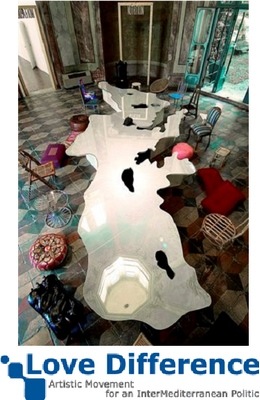 Michelangelo Pistoletto
Michelangelo PistolettoLove Difference, Artistic movement for an InterMediterranean Politic
Courtesy Michelangelo Pistoletto, Musée d'art moderne de Saint-Etienne Métropole, Fondation Pistoletto Cittadellarte
www.mam-st-etienne.fr
Georg Baselitz, Royal Academy of Arts, London
Chaim Soutine, Pinacotheque de Paris
13/10/07
Stefano Urani, Expo Photo Paris

STEFANO URANI, Photographies
Série Densités
Série Imaginaire Zéro
Expo Photo des Rencontres Photographiques du 10e
© Stefano Urani, Photo de la série Densité
Les photos montrent des présences pour indiquer une absence, ce sont des densités qui, au regard, acquièrent la densité de sensations. Stefano Urani commence la photographie, en autodidacte, après une formation musicale. La réflexion sur l’image et sa critique sont au centre de son travail. Le travail densités-ombres a été projeté en juillet 2007 au festival OFF des Rencontres d’Arles. A noter que cette installation part du centre Jean Verdier et s’étend dans les rues du 10e autour des arrêts de bus.
Stefano Urani, Densité
Centre d’animation Jean Verdier
11, rue de Lancry
M° République
Du lundi au vendredi de 9h à 22h,
le samedi de 9h à 12h et de 14h à 18h
Du 16/10 au 30/11

Stefano Urani
Série Imaginaire Zéro
Photographies réparties dans
tout le 10e arrondissement
à proximité des arrêts de bus
© Stefano Urani
« "Imaginaire zéro" est une série de photographies installées dans l’espace urbain du 10ème à proximité des arrêts de bus, sur des superficies de passage, anonymes, où se condensent la poussière et l’inattention. Pour proposer à l’observateur, à travers sa volonté de recherche ou bien grâce à une petite découverte inattendue, une réflexion sur l’image » - Stefano Urani
10/10/07
Association Afrique In Visu, Expo Photos Paris
 ASSOCIATION AFRIQUE IN VISU
ASSOCIATION AFRIQUE IN VISU
Projection de portfolios de photographes africains
Echanges sur le métier de photographe en Afrique
Lors des Rencontres Photographiques du 10e
Photo © Afrique In Visu
Le local 37 invite l’association Afrique in visu, plateforme d’échanges autour du métier de photographe en Afrique. Des projections présentent l’action, les enjeux d’Afrique in visu et le métier de photographe en Afrique à travers différents portfolio de photographes du Maroc, Congo Brazzaville, Mali, Nigeria… Des soirées permettront de rencontrer les photographes.
Pour plus d’informations, rendez-vous sur www.afriqueinvisu.org
Local 37
37, rue de la Grange aux Belles
75010 Paris
M° Colonel Fabien
Jeudi et vendredi de 17h30 à 21h,
samedi et dimanche de 14h à 20h
Du 16/10 au 28/10
Pino Art Works Exhibition in Dubai at DIFC Gallery
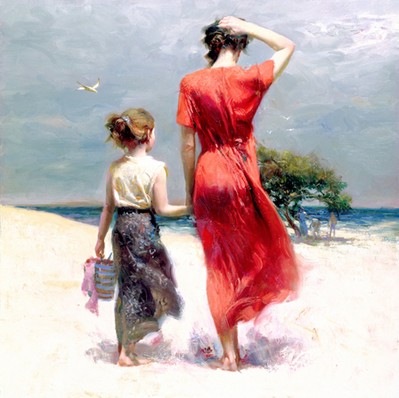
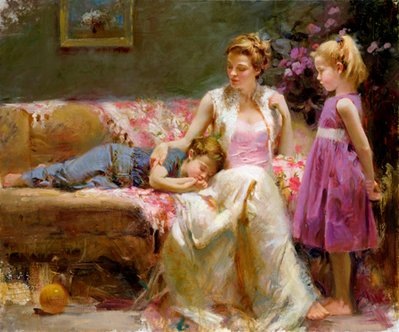
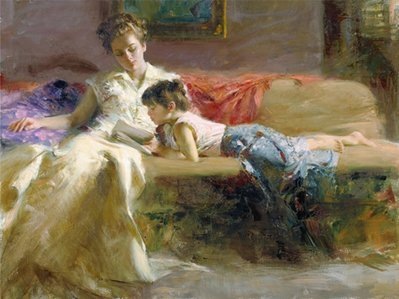
05/10/07
The Development of Photo-Reportage - Exhibition in Paris
Photography Exhibition > Paris
The Development of Photo-Reportage
Musée d'Orsay, Paris
16 October 2007 - 6 January 2008
The word ‘reporter’, which refers to a journalist investigating a subject, entered the French language at the beginning of the 19th Century, when the press was in full expansion. Photo-reportage in the proper sense developed in the 20th Century with the improvement of cameras and the boom of illustrated magazines. It was not until the turn of the last century that simultaneous printing of photography and text, through the use of a screen was made possible and finally applicable on an industrial scale.
This type of investigation, which the big newspapers put “reporters” in charge of, existed, to tell the truth, since the invention of photographs on paper, at the beginning of the 1840s but they were forced to remain relatively exclusive.
The theme of the exhibition, put together from the collections of the Musée d’Orsay, is social reportage and its beginning. It aims to show how, throughout the 19th Century, photographers viewed the silent majority of the society, made up of factory workers, small artisans, peasants, the poor, and those without ranking or even the populations barely touched by western civilisation.
It was after the events of 1848 that the “common people” gained access to historical dignity, to borrow the expression of Robert L. Herbert, and became one of the favourite themes of philosophers, writers and painters, before being that of the reformers. Photographers naturally followed suit.
The chosen prints were made at very different times and in very different conditions. They demonstrate the artists’ exercises, such as the series on the fishermen of New Haven taken in 1843 by Hill and Adamson, or even the photographs that Napoleon III commissioned to commemorate the creation of a Hospice for the workers injured on building sites and to document the Rhône floods, as well as genuine social studies, such as the photo-reportage on the Jewish communities in Poland, produced in 1919 on request by a charitable organisation. All of these scenes however share the task of confirming the arrival of these new heroes, just as surely as the work of Daumier, Courbet, Millet and Doré. Firstly, they merited their existence as representatives of a class, then, at the beginning of the 20th Century, helped by development of social conscience and improvement of techniques, as separate individuals.
Curators: Françoise Heilbrun, head Curator at the Musée d'Orsay,
Assisted by Saskia Ooms and Laura Braemer
Publications: La photographie au musée d'Orsay : vers le reportage (1843-1933) [Photography at the Musée d’Orsay: the development of photo-reportage], by Françoise Heilbrun, 96 pages, 62 illustrations four-colour prints, available in French, English and Italian, co publishing 5 Continents/musée d'Orsay, EUR 12
The Development of Photo-Reportage
16 October 2007 - 6 January 2008
Musée d'Orsay
Photographic gallery
Level 0, rue de Lille side
02/10/07
Bénédicte Hébert, Annelies Strba, Hiroshi Sugimoto. Collection Frac Basse-Normandie. Exposition à l'IUFM de Saint-Lô - des illusions
01/10/07
Marie Babey, Expo Photo Paris

MARIE BABEY, Photographies
Canal Saint-Martin
Expo Photo des Rencontres Photographiques du 10e
© Marie Babey
Depuis 1990, Marie Babey a choisi de s'immerger, par le biais de reportages au long cours, dans des communautés humaines fermées, qui forment leurs " tribus ". Ses reportages sur le porte-avions Foch, les Marins, les Commandos marine et les Pompiers de Paris ont fait l'objet de livres photographiques.
Egalement au service de l'humanitaire, elle a réalisé l'ouvrage " Un cœur pour la vie ", avec le Professeur Francine Leca, qui opère les enfants cardiaques des pays défavorisés.
Son dernier livre, " Canal Saint-Martin ", est sorti en mai 2007 aux Editions Creaphis.
Galerie Végétale
29, rue des Vinaigriers - 75010 Paris
M° Jacques Bonsergent / Gare de l'Est
Du mardi au dimanche de 10h à 19h
Du 16/10 au 18/11

